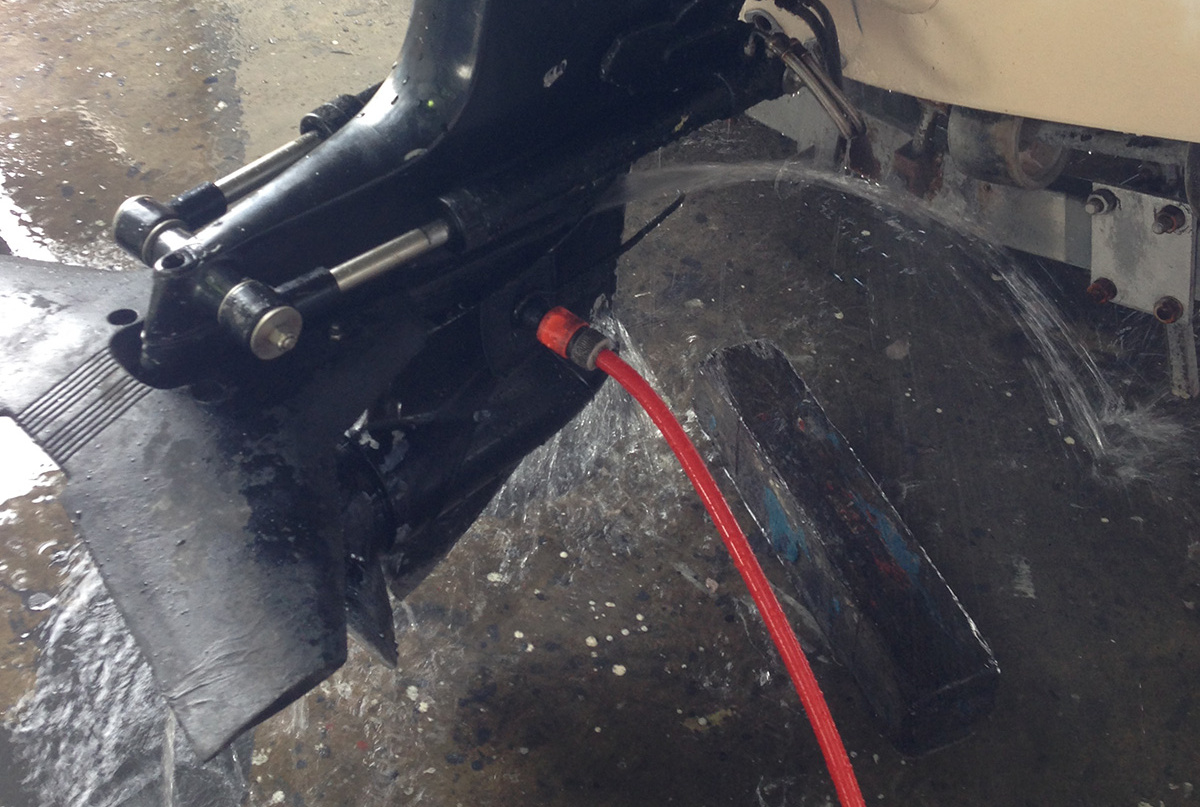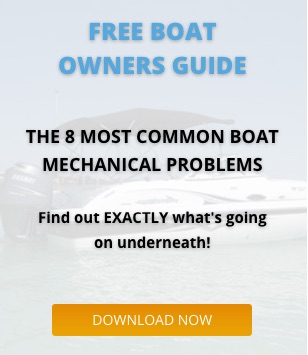While you’re out on your boat, its engine’s intake ports can pull in sand, seaweed, and of course, salt water – which can evaporate and leave salt residue on the engine’s interior. Flushing the engine removes any crud and salt water that have built up within.
Why flush?
Salt and other refuse clogs up the engine, reduces its efficiency, and causes overheating and corrosion. In a typical petrol stern drive (inboard engine), the exhaust system builds up rust and calcium. The cooling system and drive corrode. The transom shield area suffers from corrosion if allowed to dry with salt water on it. Outboard motors suffer even more due to the aluminium content in the engine.
Does the storage environment matter?
In a word – yes. Boats that are stored on trailers, in dry storage racks, or in seapens are most in need of flushing, and should be flushed after every outing. It isn’t quite as crucial for boats that live in the water, because the water never completely drains out, so saltwater doesn’t evaporate and leave salt residue to mix with air and rust the engine interior.
How long should a flush take?
The short answer is: at least 5 minutes, especially for dry-stored boats. But the ideal flushing length depends on whether the engine is at operating temperature. If not, the engine will need to warm up to that temperature during the flushing procedure, meaning it will take longer to complete. If your boat isn’t permanently in the water, ensure that you allow the engine to reach its operating temperature during flushing and then flush for 5 minutes; this ensures that the thermostat can open and seawater can drain from the block and cylinder heads.
What sort of water should I use?
Tap, recycled and tank water are all suitable for use in flushing your boat engine; you just need to get rid of the salt and anything else that’s found its way into the area. Salt water, obviously, is not suitable.
What do you recommend for boats that are permanently in the water?
If you have a bigger boat that lives in the water, look at installing a freshwater flushing kit. This can be plumbed into the normal seawater intake system and allows you to simply connect a hose and run freshwater through the engine when you’ve finished using it.
Remember…
No matter what sort of boat you have, and what sort of storage you use for it, its engine should be flushed after each use. If your boat is stored in a trailer, dry storage, or sea pen, then ensure that you flush its engine for at least 5 minutes while it’s at operating temperature.



